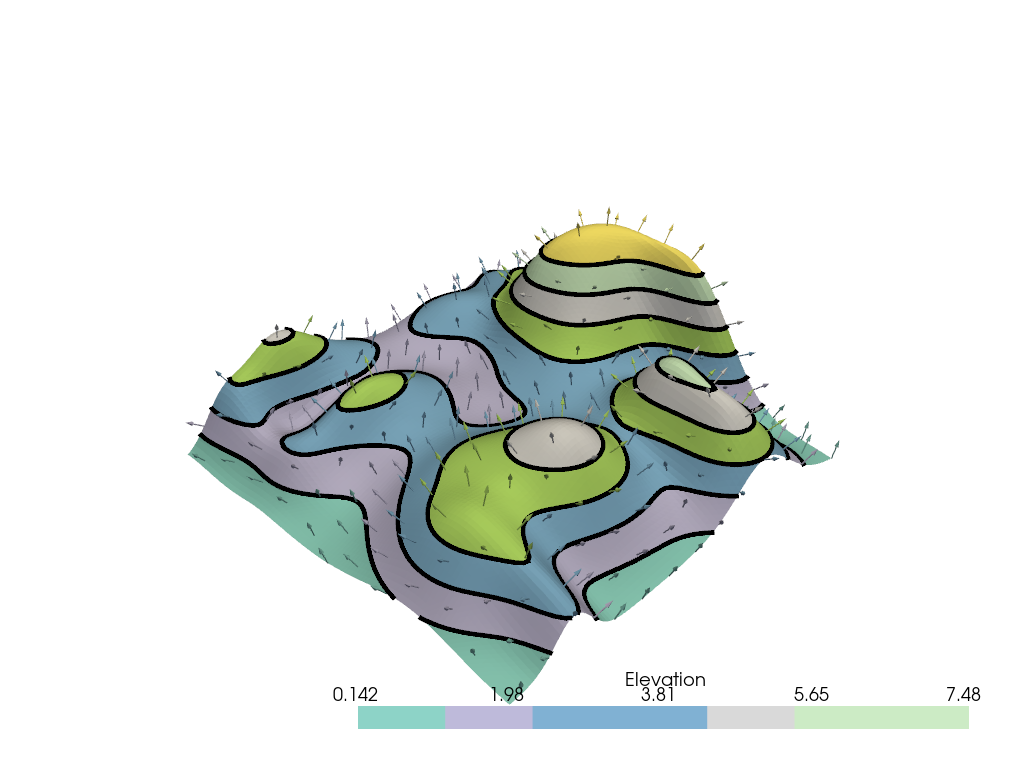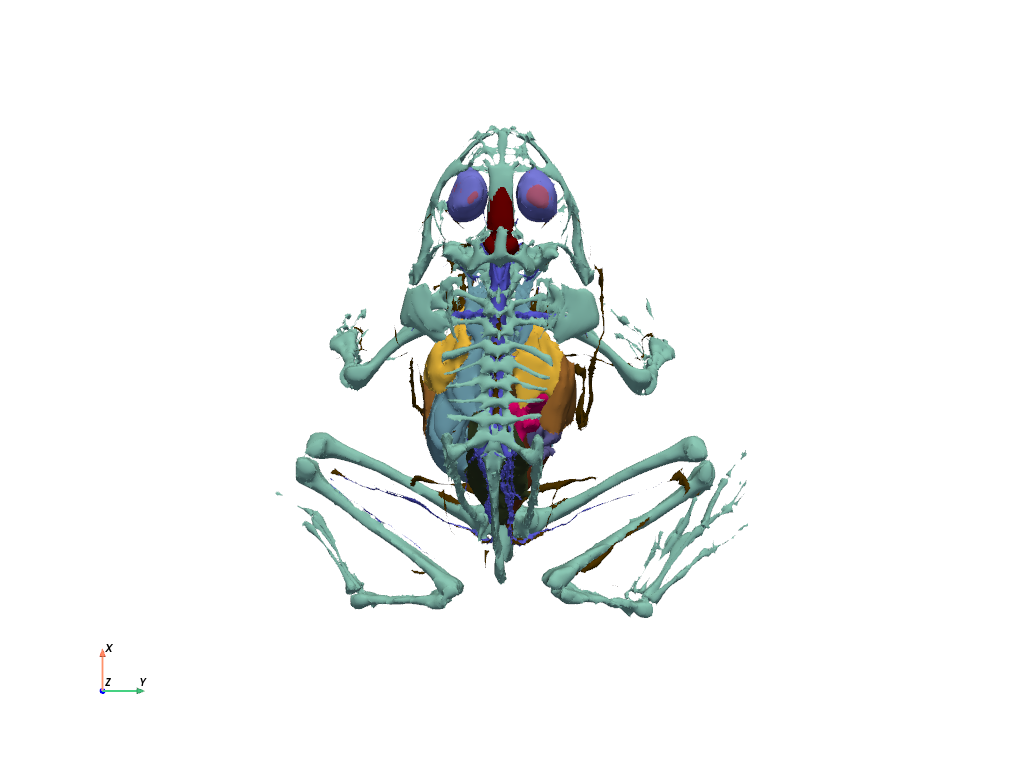Note
Go to the end to download the full example code.
Contouring#
Generate iso-lines or -surfaces for the scalars of a surface or volume.
3D meshes can have 2D iso-surfaces of a scalar field extracted and 2D surface meshes can have 1D iso-lines of a scalar field extracted.
from __future__ import annotations
import numpy as np
import pyvista as pv
from pyvista import examples
Iso-Lines#
Let’s extract 1D iso-lines of a scalar field from a 2D surface mesh.
mesh = examples.load_random_hills()
contours = mesh.contour()
pl = pv.Plotter()
pl.add_mesh(mesh, opacity=0.85)
pl.add_mesh(contours, color='white', line_width=5)
pl.show()

Iso-Surfaces#
Let’s extract 2D iso-surfaces of a scalar field from a 3D mesh.
mesh = examples.download_embryo()
contours = mesh.contour(np.linspace(50, 200, 5))
pl = pv.Plotter()
pl.add_mesh(mesh.outline(), color='k')
pl.add_mesh(contours, opacity=0.25, clim=[0, 200])
pl.camera_position = [
(-130.99381142132086, 644.4868354828589, 163.80447435848686),
(125.21748748157661, 123.94368717158413, 108.83283586619626),
(0.2780372840777734, 0.03547871361794171, 0.9599148553609699),
]
pl.show()

Banded Contours#
Create banded contours for surface meshes using contour_banded().
mesh = examples.load_random_hills()
Set number of contours and produce mesh and lines
Also make normal vectors
arrows = mesh.glyph(scale='Normals', orient='Normals', tolerance=0.05)
# Common display arguments
dargs = dict(scalars='Elevation', n_colors=n_contours - 1, cmap='Set3')
pl = pv.Plotter()
pl.add_mesh(edges, line_width=5, render_lines_as_tubes=True, color='k')
pl.add_mesh(contours, **dargs)
pl.add_mesh(arrows, **dargs)
pl.show()

Contours from a label map#
Create labeled surfaces from 3D label maps (e.f. multi-label image segmentation)
using contour_labels().
Requires VTK version 9.3
if pv.vtk_version_info >= (9, 3):
label_map = pv.examples.load_frog_tissues()
mesh = label_map.contour_labels()
mesh.plot(cmap='glasbey', cpos='yx', categories=True)

Total running time of the script: (0 minutes 21.193 seconds)